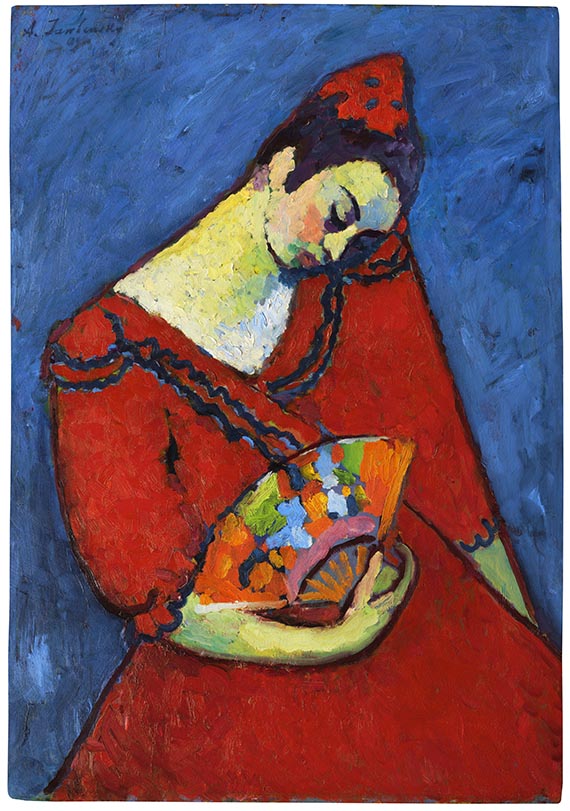Dictionary


Capitalist Realism
The term "Capitalist Realism", introduced as an ironic analogy to "Socialist Realism", strictly spoken denotes a short period of co-operation of just three artists: Gerhard Richter (born in 1932), Sigmar Polke (born in 1941) and Konrad Fischer (1939-96), who became famous as a painter under the pseudonym Konrad Lueg. The term Capitalist Realism was used as of 1963, appearing in the title of the art event "Leben mit Pop - Eine Demonstration für den Kapitalistischen Realismus" (Life with Pop - A Demonstration for Capitalist Realism) in the Düsseldorf furniture store Berges.
In terms of topics, the three artists, who had studied together at the Düsseldorf Academy, exposed the consume-oriented and superficial capitalist society. Their range of topics was later increased by the oppression of women, war and racial hatred, topics that were also addressed by Critical Realism.
Besides prints and paintings, Capitalist Realism also found expression in happenings and installations. In terms of techniques, the artists used advertising photographs from magazines, similar to Pop Art, by means of which they wanted to expose Western consume-oriented societies.
The period of Capitalist Realism lasted from 1963 to 1975, besides Gerhard Richter, Sigmar Polke and Konrad Lueg, other artist in connection with Capitalist Realism were KP (Klaus Peter) Brehmer (1938-97), Karl-Horst Hödicke (born in 1938) and Wolf Vostell (1932-98).
The term "Capitalist Realism", introduced as an ironic analogy to "Socialist Realism", strictly spoken denotes a short period of co-operation of just three artists: Gerhard Richter (born in 1932), Sigmar Polke (born in 1941) and Konrad Fischer (1939-96), who became famous as a painter under the pseudonym Konrad Lueg. The term Capitalist Realism was used as of 1963, appearing in the title of the art event "Leben mit Pop - Eine Demonstration für den Kapitalistischen Realismus" (Life with Pop - A Demonstration for Capitalist Realism) in the Düsseldorf furniture store Berges.
In terms of topics, the three artists, who had studied together at the Düsseldorf Academy, exposed the consume-oriented and superficial capitalist society. Their range of topics was later increased by the oppression of women, war and racial hatred, topics that were also addressed by Critical Realism.
Besides prints and paintings, Capitalist Realism also found expression in happenings and installations. In terms of techniques, the artists used advertising photographs from magazines, similar to Pop Art, by means of which they wanted to expose Western consume-oriented societies.
The period of Capitalist Realism lasted from 1963 to 1975, besides Gerhard Richter, Sigmar Polke and Konrad Lueg, other artist in connection with Capitalist Realism were KP (Klaus Peter) Brehmer (1938-97), Karl-Horst Hödicke (born in 1938) and Wolf Vostell (1932-98).
Offers
Headquarters
Joseph-Wild-Str. 18
81829 Munich
Phone: +49 89 55 244-0
Fax: +49 89 55 244-177
info@kettererkunst.de
Louisa von Saucken / Undine Schleifer
Holstenwall 5
20355 Hamburg
Phone: +49 40 37 49 61-0
Fax: +49 40 37 49 61-66
infohamburg@kettererkunst.de
Dr. Simone Wiechers / Nane Schlage
Fasanenstr. 70
10719 Berlin
Phone: +49 30 88 67 53-63
Fax: +49 30 88 67 56-43
infoberlin@kettererkunst.de
Cordula Lichtenberg
Gertrudenstraße 24-28
50667 Cologne
Phone: +49 221 510 908-15
infokoeln@kettererkunst.de
Hessen
Rhineland-Palatinate
Miriam Heß
Phone: +49 62 21 58 80-038
Fax: +49 62 21 58 80-595
infoheidelberg@kettererkunst.de
We will inform you in time.




